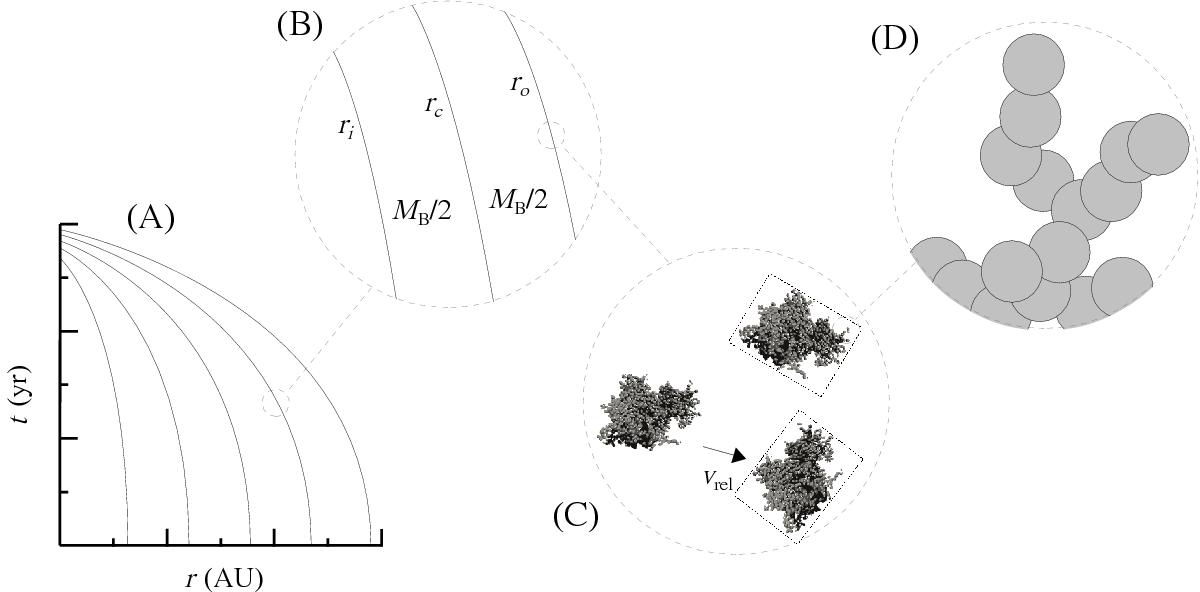Fig. 2

Illustration of the batch method described in Sect. 3. A) Globally, the dust content of the protoplanetary disk is described by a collection of unique and independent batches. The trajectories that individual batches follow in space and time are dubbed lifelines. B) Each batch is composed of three separate legs. These legs can move closer together or further apart, but the mass enclosed between the inner two and outer two legs is always identical. For each leg, growth and radial drift are solved simultaneously using Eqs. (13) and (14), while the batch’s surface density and its first derivative (needed to calculate the growth timescales) are obtained using Eqs. (17) and (20). C) At every leg location, the local dust component is described by a monodisperse aggregate population with a single mass, size, and porosity. D) The aggregates themselves are composed of (sub)micron-sized monomers, whose properties profoundly affect the aggregate’s strength against fragmentation and compaction (see Appendix C).
Current usage metrics show cumulative count of Article Views (full-text article views including HTML views, PDF and ePub downloads, according to the available data) and Abstracts Views on Vision4Press platform.
Data correspond to usage on the plateform after 2015. The current usage metrics is available 48-96 hours after online publication and is updated daily on week days.
Initial download of the metrics may take a while.


